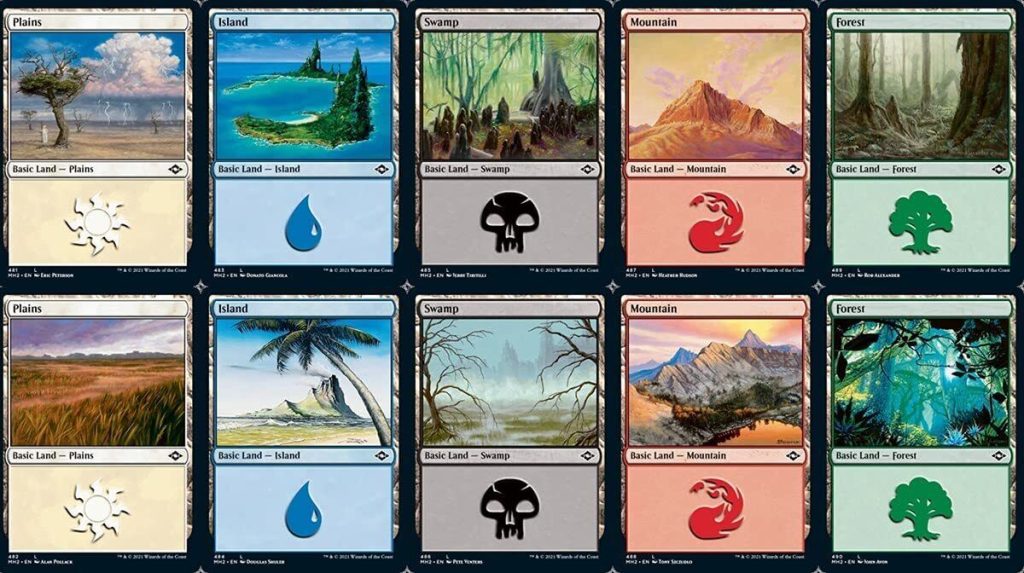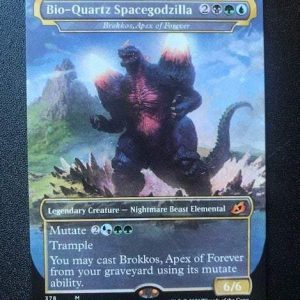Magic: The Gathering (MTG) is a diverse and complex trading card game that revolves around five colors of mana: white, blue, black, red, and green. Each of these colors represents different philosophies and play styles, creating unique experiences and strategies for players. This article will explore the different types of mana, the mechanics they represent, and how players utilize them in various deck archetypes.
What is Mana in MTG?
Mana is the fundamental resource in MTG that powers all spells and abilities. Each color of mana is tied to a specific type of land and represents distinct ideologies. Players use mana to summon creatures, cast spells, and activate abilities to reduce their opponent’s life total to zero. The five different colors of mana have their strengths, weaknesses, and strategic archetypes.
White Mana – Order and Protection
White mana, drawn from plains, symbolizes order, law, and communal good. Players who favor white mana usually build decks focused on fairness, defense, and the protection of others.
Play Style:
White decks usually revolve around control and creating armies of smaller creatures. They are known for their ability to build armies of token creatures, control the battlefield through enchantment-based removal, and gain life with lifelink. White is also known for its board wipes, which clear all creatures and reset the game when things spiral out of control.
Common archetypes in white include:
- White Weenie: An aggressive deck that uses small, efficient creatures to overwhelm opponents early in the game.
- Control: White control decks use removal and defensive creatures to stall until they can win with a powerful, hard-to-remove threat.
Blue Mana – Control and Knowledge
Blue mana, sourced from islands, represents intellect, manipulation, and the pursuit of knowledge. Blue is the color of control and delay, where players seek to manipulate the flow of the game.
Play Style:
Blue’s strength lies in its ability to counter spells, draw cards, and control the battlefield with bounce effects (returning creatures to their owner’s hands). Blue players often try to dictate the pace of the game by preventing their opponent from executing their strategy, relying on card advantage to outlast them.
Common blue archetypes include:
- Control: Focuses on countering spells and using tempo plays to lock down the opponent’s resources.
- Mill: A strategy that seeks to force opponents to draw their entire library, losing by running out of cards.
Black Mana – Power and Sacrifice
Black mana, derived from swamps, is the color of ambition, death, and sacrifice. Black seeks power at any cost, even if it means trading life, creatures, or cards.
Play Style:
Black decks often revolve around sacrifice mechanics, life drain, and creature recursion. Players can trade their resources to destroy creatures, discard their opponent’s hand, or bring back powerful threats from the graveyard.
Common black archetypes include:
- Reanimator: A deck built around bringing back powerful creatures from the graveyard quickly.
- Aggro-Control: Black excels at combining aggressive creatures with removal spells to control the battlefield while dealing steady damage.
Red Mana – Chaos and Destruction
Red mana, drawn from mountains, symbolizes passion, impulse, and freedom. Red decks tend to be fast, aggressive, and highly destructive, focusing on direct damage.
Play Style:
Red decks are known for their burn spells, which can damage opponents and creatures directly. Red also emphasizes haste creatures, allowing them to attack as soon as they hit the battlefield. Red players often rely on a fast-paced strategy to defeat their opponent before they can mount a defense.
Common red archetypes include:
- Burn: Focuses on dealing with direct damage with spells like Lightning Bolt to reduce the opponent’s total life quickly.
- Aggro: A hyper-aggressive strategy that floods the board with fast creatures and closes the game before an opponent can stabilize.
Green Mana – Growth and Nature
Green mana, generated by forests, is the color of nature, growth, and primal strength. Green decks are known for their powerful creatures and the ability to ramp mana quickly, allowing them to play more significant threats earlier than other colors.
Play Style:
Green decks excel at mana ramp, enabling players to summon large creatures and cast powerful spells ahead of the curve. Green creatures often have trample, making them hard to block effectively. Green also uses creature tutors and fight mechanics to maintain control of the board.
Common green archetypes include:
- Ramp: Uses cards that generate extra mana to play massive creatures or game-ending spells early in the game.
- Stompy: A creature-based deck that summons significant threats to overpower the opponent.
Multicolor Decks and Hybrid Mana
In MTG, players aren’t restricted to just one color of mana. Multicolor decks, which use a combination of different mana types, are common and open up a wide range of strategies. Hybrid mana cards can be cast using one of two colors, increasing deck-building flexibility.
Play Style:
Multicolor decks combine the strengths of different colors to create synergistic strategies. Popular combinations include:
- Azorius (White-Blue): A control-oriented strategy focused on countering spells and locking down the opponent’s board.
- Golgari (Black-Green): A deck focused on using the graveyard as a resource for powerful creatures and effects.
- Gruul (Red-Green): An aggressive strategy centered on ramping up quickly to overpower the opponent with giant creatures and burn spells.
Conclusion
The beauty of Magic: The Gathering lies in the variety of play styles that the five colors of mana enable. From the protective and orderly strategies of white to the fast-paced, fiery approach of red, each mana color brings its own flavor to the game. Players experimenting with different combinations can discover new ways to outwit their opponents and evolve their play style. Whether you prefer control, aggro, or combo decks, the diverse world of MTG has something for everyone.


